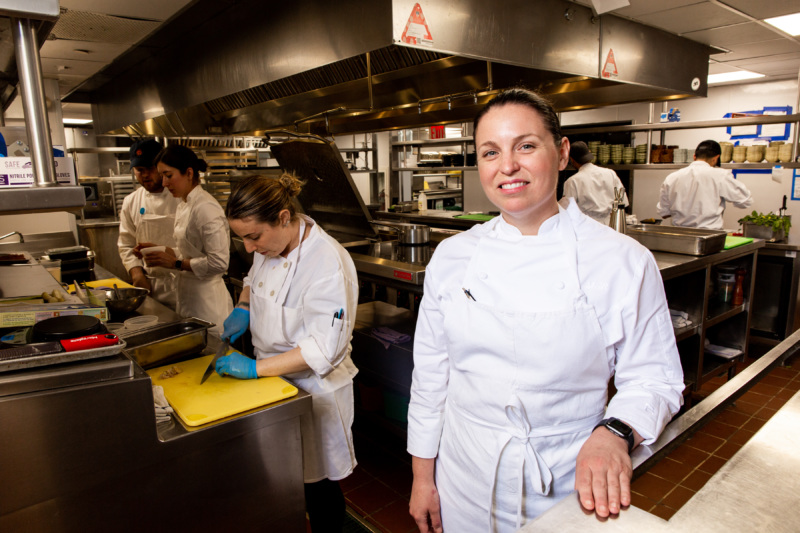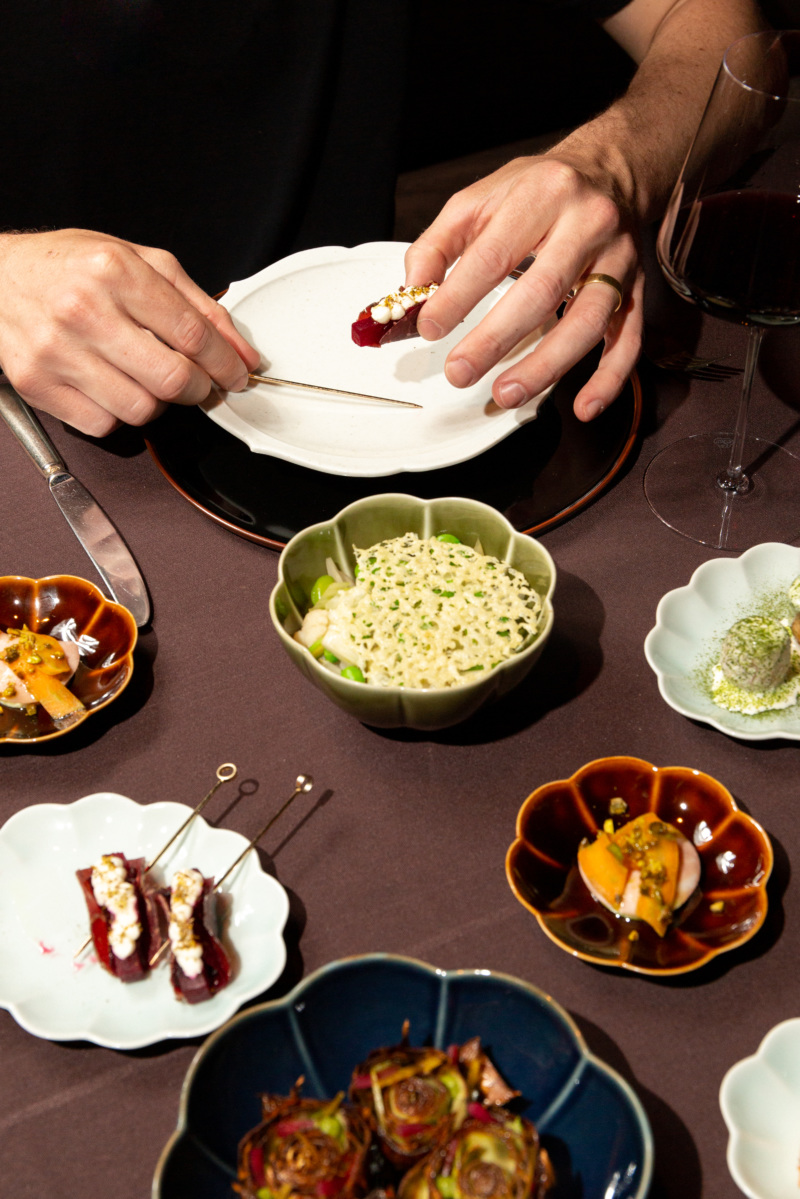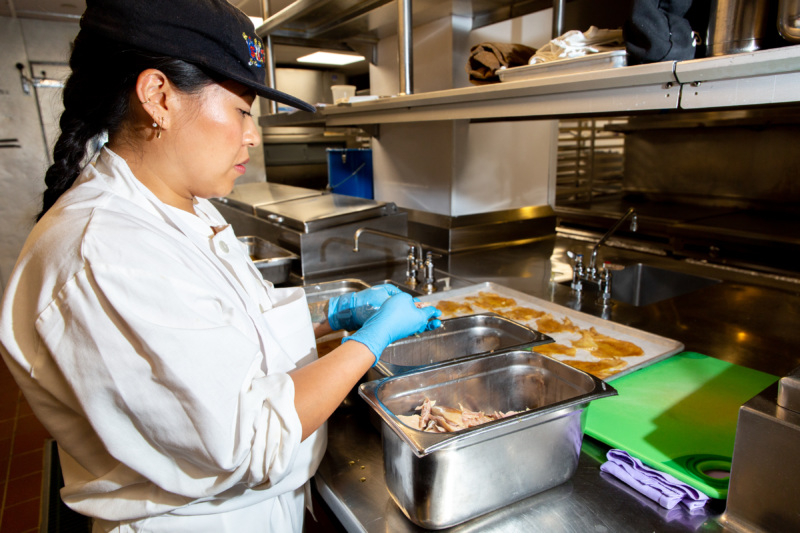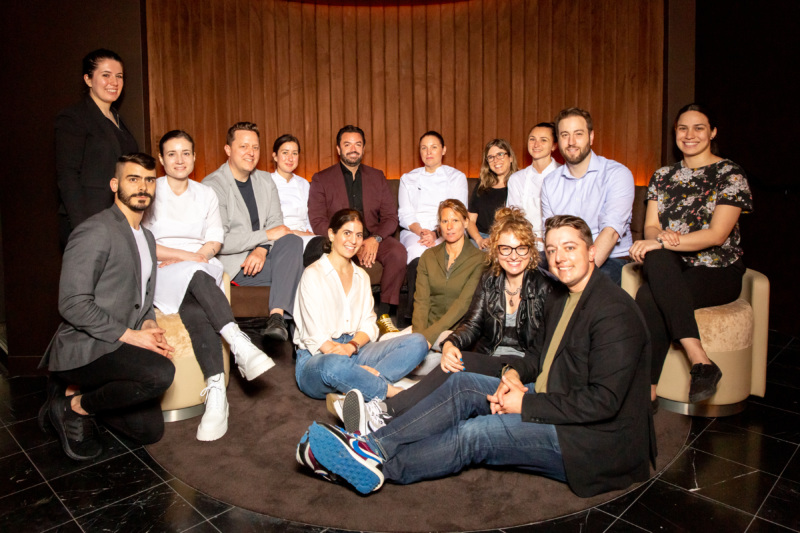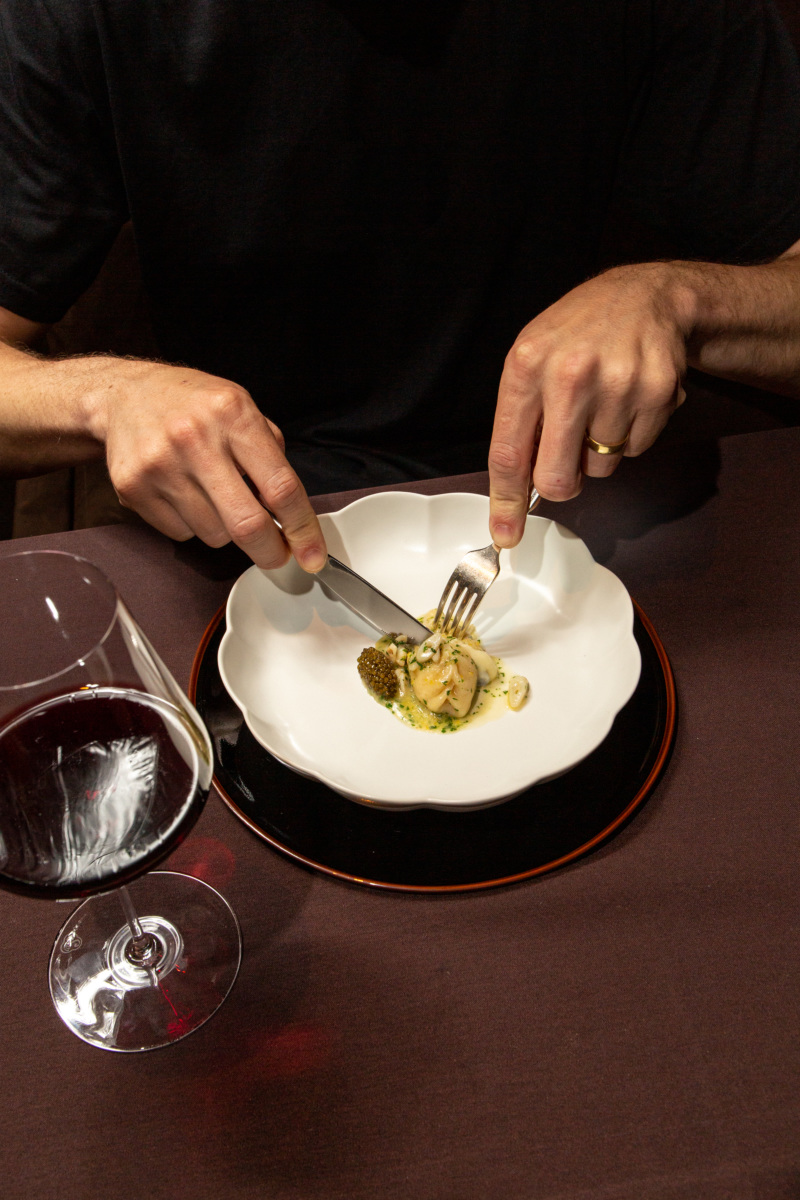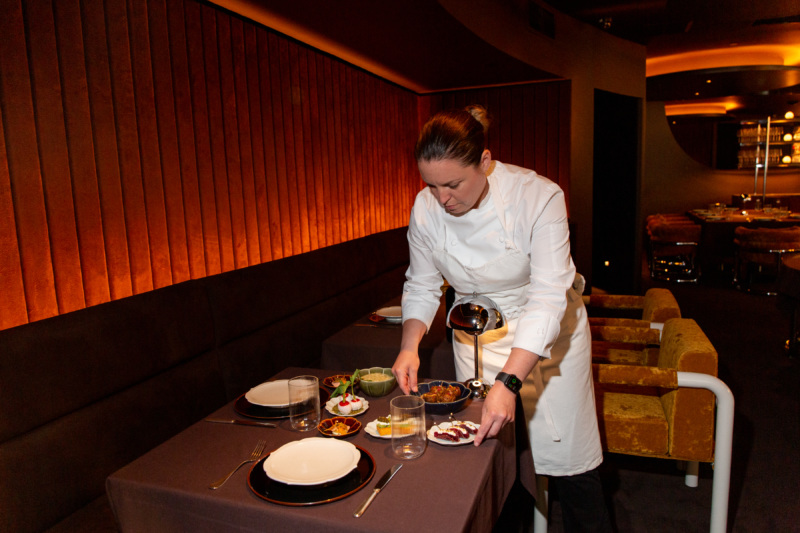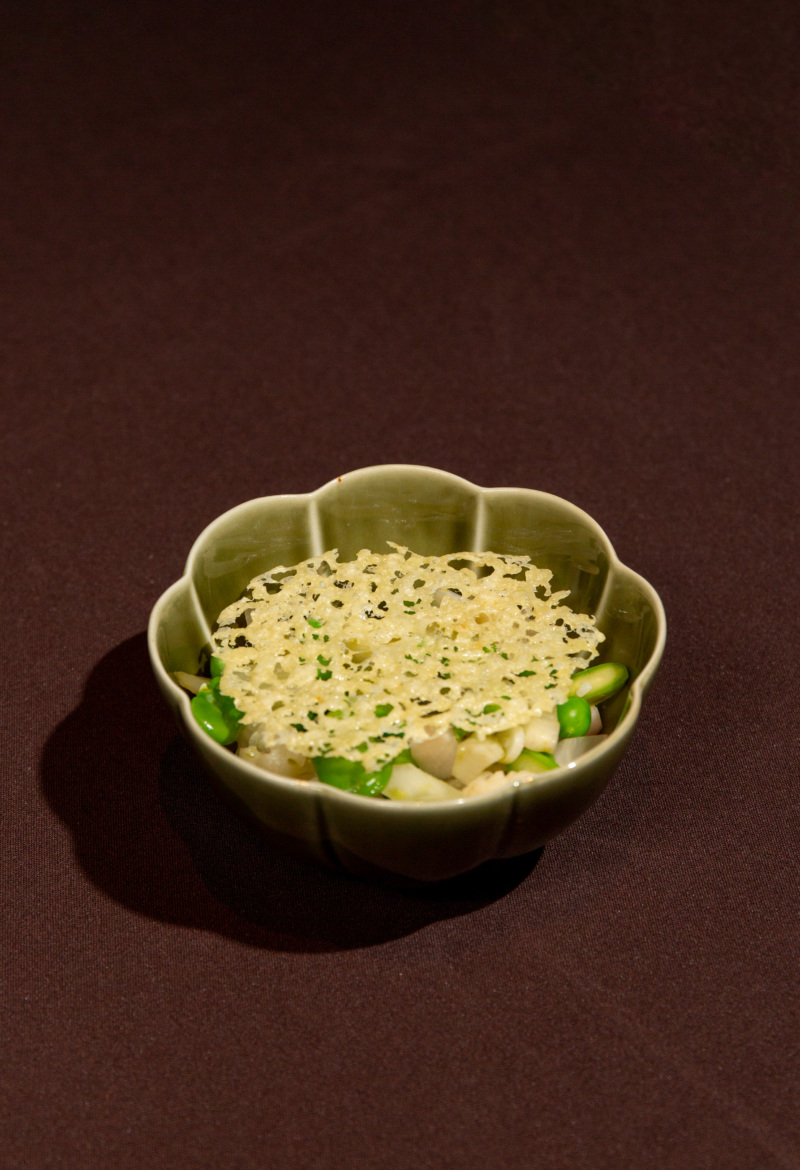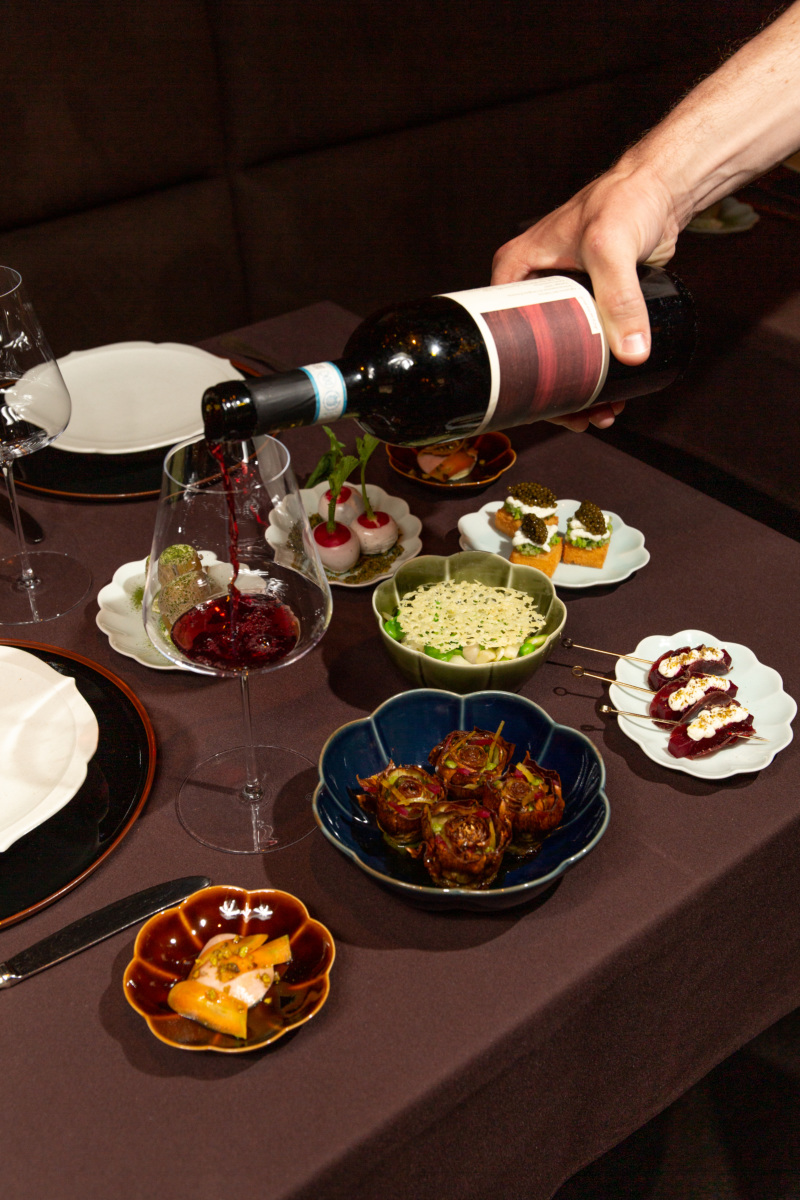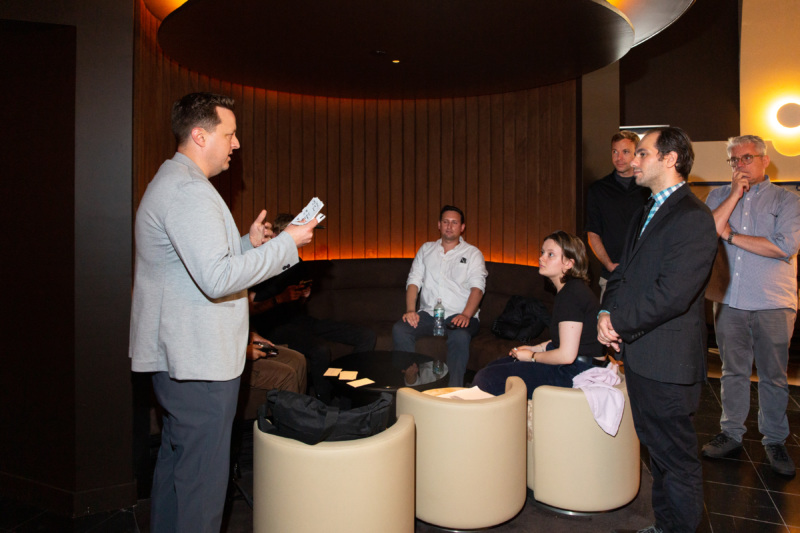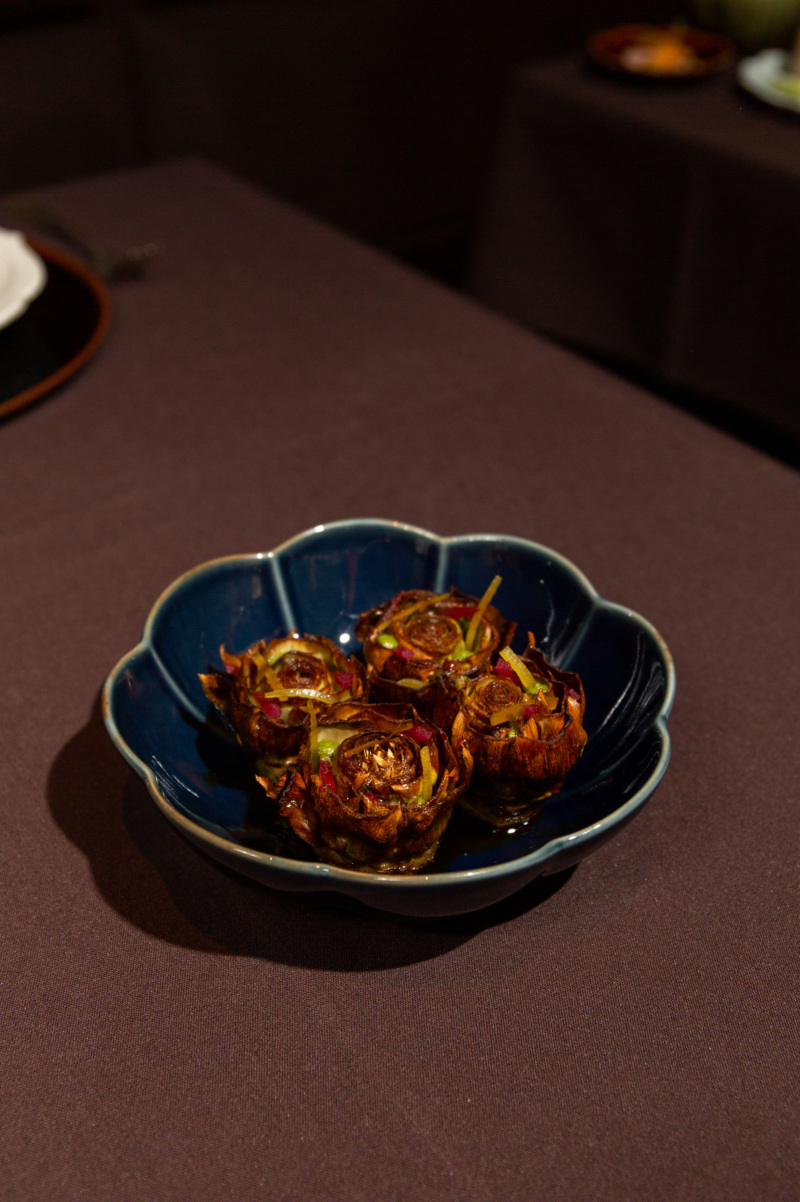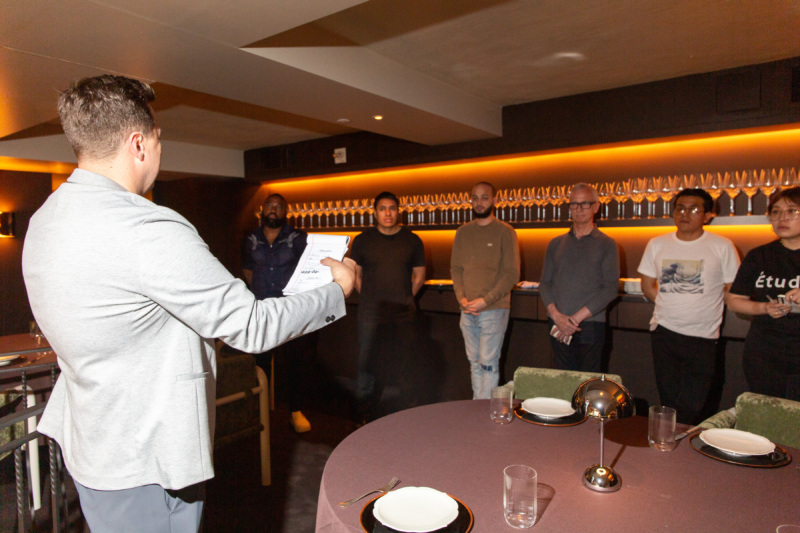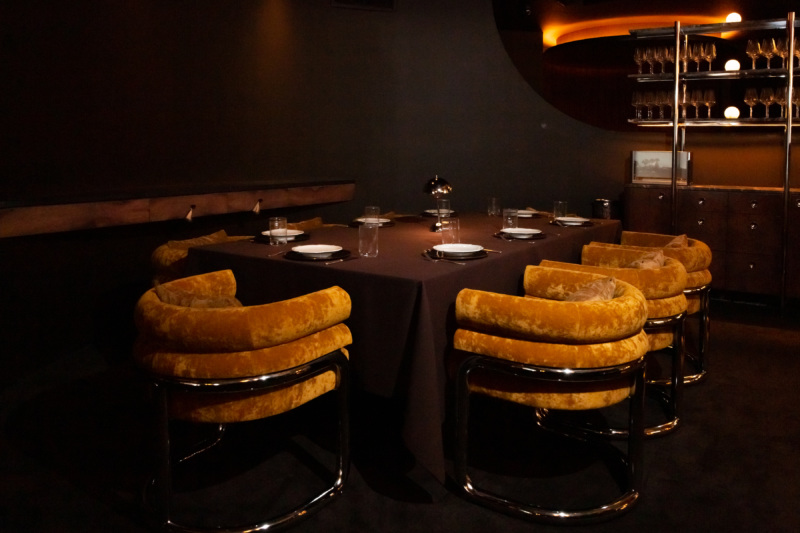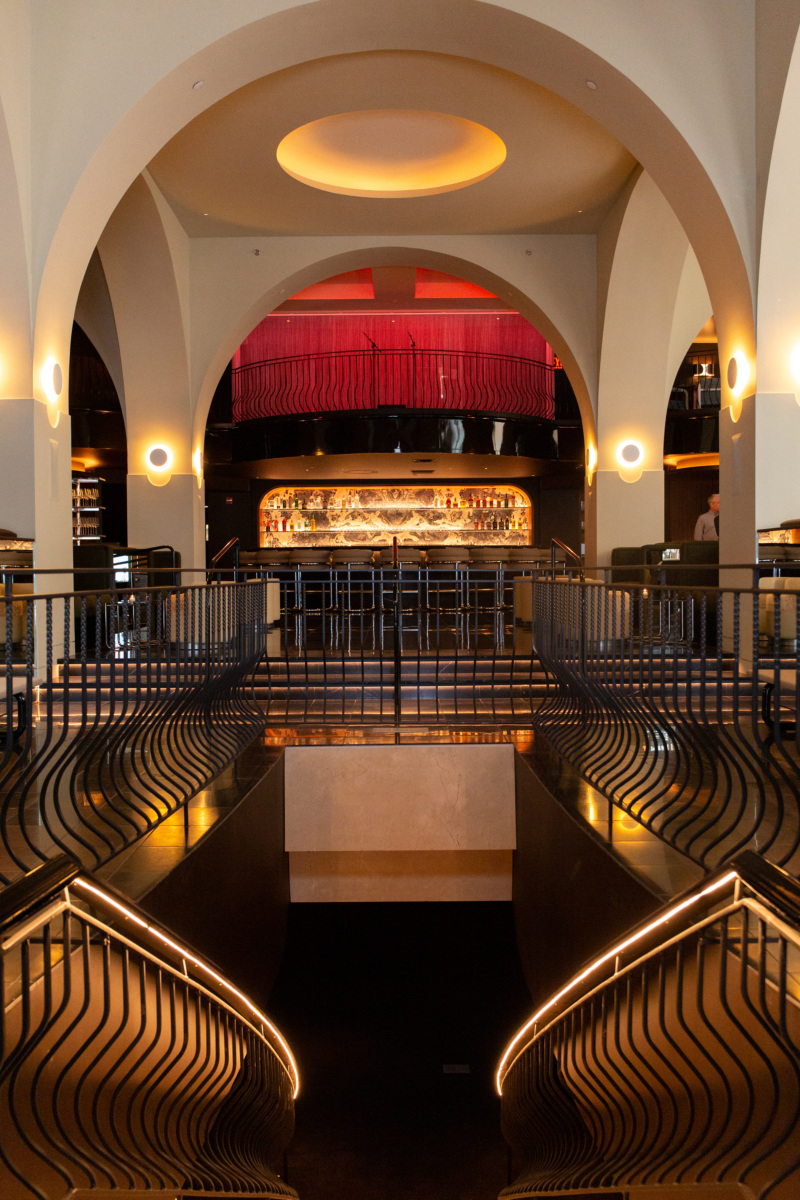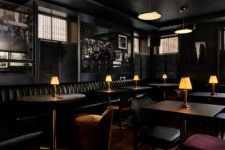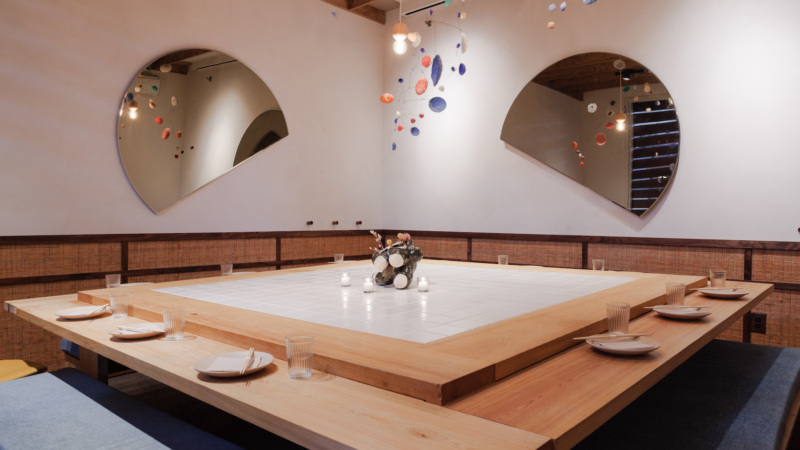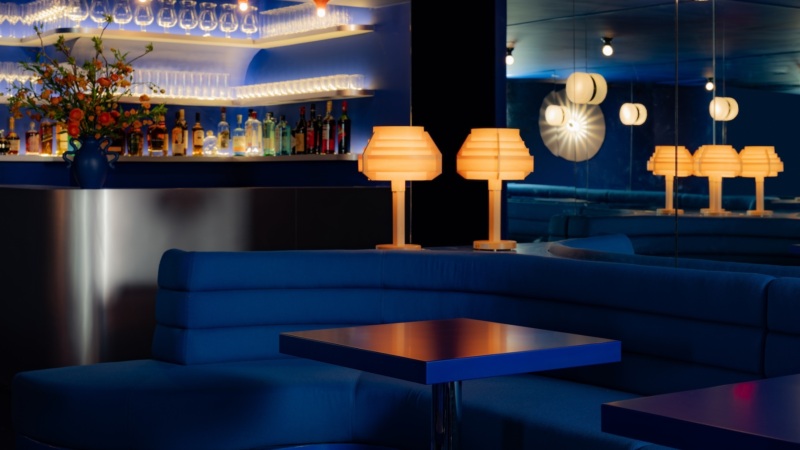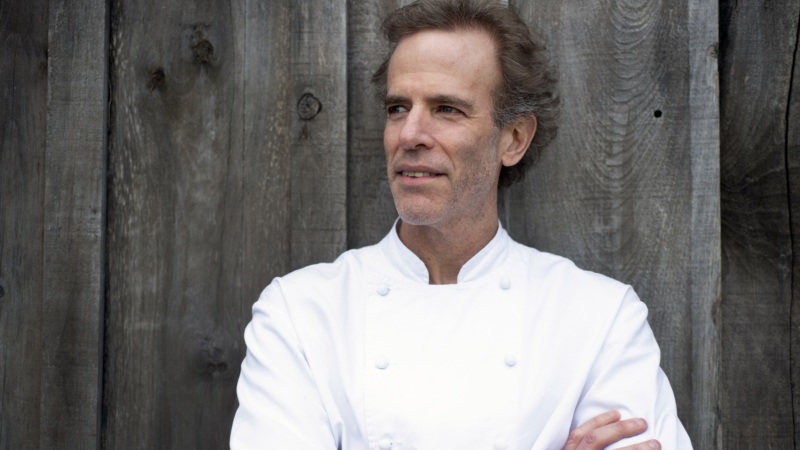
Al Coro Is Here At Last. Can It Really Rewrite the Rules of Fine Dining?
There are few restaurant spaces in New York City that command the same sense of awe as the dining room at 85 Tenth Avenue in Chelsea. At around 24,000 square feet, it’s a rare piece of real estate and, considering the scalloped balcony seating, a bona fide culinary stage. For the last two years, this dining room has been dormant. Or rather, it has given the appearance of dormancy while, behind closed doors, an urgent facelift was underway.
The task at hand was to remove all traces of the last tenant — Del Posto, the starry vanguard of Italian fine dining, which occupied the space for 15 years. As Jeff Katz, an owner, put it to his team of architects and designers: “Erase the old restaurant.” This month, Katz and chef Melissa Rodriguez, co-owners in the business, are unveiling Al Coro, a seasonal Italian fine-dining concept that will call this address home for the foreseeable future.
“Does it feel different?” This is the first question Rodriguez asks as we stand in the middle of the dining room. Taking it all in, I feel dwarfed by the sheer volume of space, a sensation I associate with the handful of meals I ate at Del Posto. But things do in fact look different. To start, the conspicuous Cinderella staircase in the middle of the room is gone. In its place is a glowing backlit bar, equally eye-catching, but much more on-brand for Katz and Rodriguez, whose primary goal these days seems to be putting the fun into fine dining.
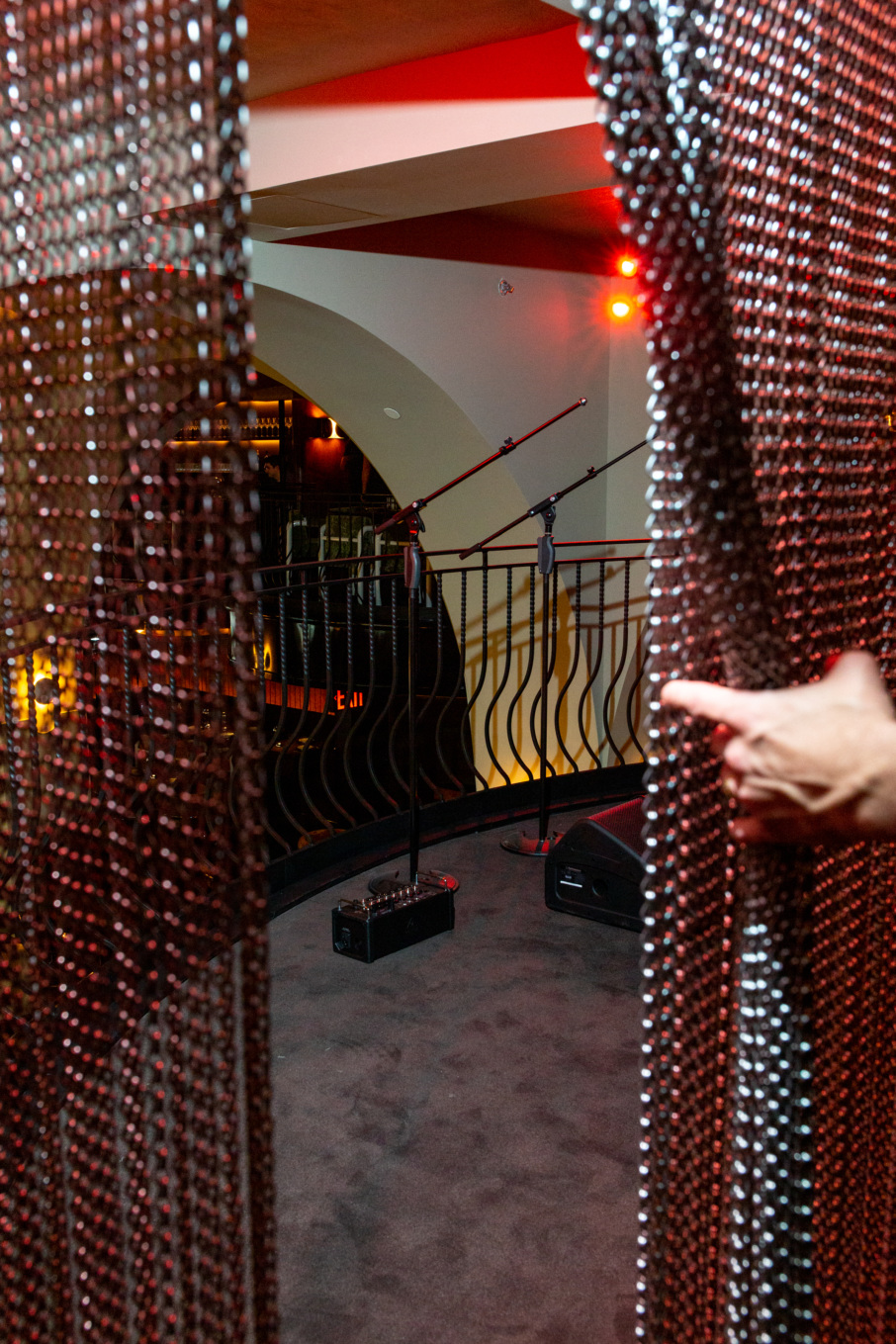

There is a new platform above the bar, an actual stage, from which live music will fill the room, but more on that in a minute. The old Cognac color scheme and stiff seating have been updated with fresh off-white paint, an earthy, mossy green palette, and abundantly plush chairs and banquettes. The angular columns have been supplemented with rounded arches, inspired by the Palazzo della Civiltà Italiana in Rome. Yes, the white tablecloths are gone (replaced by a more somber hue) but so too are other fine-dining formalities, like overly spaced-out tables and, especially, the little stools for little bags that became symbols of Del Posto’s approach to swank.
Beyond the physical transformation, Katz and Rodriguez have both said they want to imbue this space with new energy; the fine-dining version of a vibe shift. “We really want it to be a place that you go to celebrate, but we want it to feel a little bit looser, a little more real,” says Katz. It’s counterintuitive to conjure the relaxed buzz of an intimate dinner party in a space this grand, but the implications are clear — lose the pretense that surrounds fine dining, and update the pomp.
Of course, it’s not like New Yorkers haven’t seen this style of service before. Union Square Hospitality Group effectively banked its reputation on an approach to hospitality that allowed even the finest of dining to be anchored in congeniality, as seen at The Modern and Gramercy Tavern. More recently has come a refined-but-still-chill approach to service from newcomers like 63 Clinton and, notably, Crown Shy, the downtown restaurant that Katz opened with chef James Kent. (Katz and Kent recently split as business partners, leaving Katz to run Al Coro with Rodriguez, and Kent with Crown Shy, Saga, and Overstory). The innovation here will be to attempt it on a scale not really seen before. And, in tandem with Rodriguez’s version of sophisticated Italian cuisine, to perfect an approach that balances style with substance.
The vestibule leading into Al Coro’s kitchen is painted black, like the insides of a black-box theater designed to immerse people in the show. Pushing the door open into the white-bright kitchen is a little disorienting, but eventually it becomes apparent that the new kitchen looks … a lot like the old kitchen. Materially, or at least visibly, not much has changed. Rodriguez walks comfortably but quietly through, pointing out each station and singling out a few of her chefs de cuisine.
Rodriguez is one of the city’s most tenured fine-dining chefs, but she’d never say that herself. She started her career at 18, when she enrolled in the Culinary Institute of America. After graduating in 1999 and working in some very prestigious kitchens around New York, including Oceana and Daniel, she landed a job as sous chef at Del Posto in 2011. She worked her way up to become executive chef in 2017, and stayed there until the restaurant closed in 2020. In those twilight years, Rodriguez’s food was on overt display, elaborate and yet unfussy. But it was overshadowed by the restaurant’s dwindling fortunes, entangled as they were with the tumbling careers of then-owners Mario Batali and Joe Bastianich.
When I ask Rodriguez to define her style of cooking, she pauses to consider the question. In that moment, it seems like she would rather set down a composed plate and let me find the words myself. After all, until now, Rodriguez has been communicating these ideas through her food — and not through an intermediary like myself. That hesitancy was, in its way, at odds with the affectations of Del Posto — a look-at-me restaurant that, in the end, was fronted by a chef not entirely comfortable with the spotlight.
It takes a bit of prompting, but turns out Rodriguez has plenty to say — although her explanations of her style of cooking can be subtle, and complicated to parse. There are a lot of familiar chef words, like simple and seasonal, and she emphasizes the importance of finding the right ingredients. “Half of your job as a chef is sourcing,” she says.
This is the sort of insight that’s more telling than it seems. At first, it’s hard to see how Rodriguez is going to reconcile her down-to-earth style with the lavish ambiance. But it soon becomes clear: She isn’t too concerned with luxury, at least not in the traditional sense. A self-professed flavor wonk, Rodriguez prefers to work with classic building blocks of taste — salt, acid, fat. The composed beauty of her dishes comes from synergy, rather than the usual luxury-signaling via a bump of caviar or a mountain of truffles. That’s not to say there won’t be either of those things — one pasta on the opening menu is Sardinian-style culurgiones stuffed with a velvety potato, fontina, and mascarpone filling and finished with a caviar butter sauce and razor clams. In this case, the dish as a whole is greater than the sum of its parts.
At first, it’s hard to see how Rodriguez is going to reconcile her down-to-earth style with the lavish ambiance. But it soon becomes clear: She isn’t too concerned with luxury, at least not in the traditional sense.
That said, at Del Posto, Rodriguez was known to work with the finest, spare-no-expense ingredients from across Italy and the United States, and this is not too far off from how she plans to approach her menus at Al Coro — although perhaps with a tweak or two to keep up with current tastes. “Hopefully it feels like a progression,” she says.
And Rodriguez acknowledges her version of a regional Italian menu is interpretive. “I’m not Italian. I might not pull from memory or family, so I say regional Italian with a lot of creative liberties.” She will embrace the Italian spirit and add a market-driven American accent, but also intends to maintain a healthy distance from red-sauce Italian American cuisine, like the wry interpretations found at Carbone and Don Angie (or even at Del Posto, under Rodriguez’s predecessor, Mark Ladner). It’s also worth noting that the wine list, which was once focused on Italy — and Champagne — will now expand into something with more global representation.
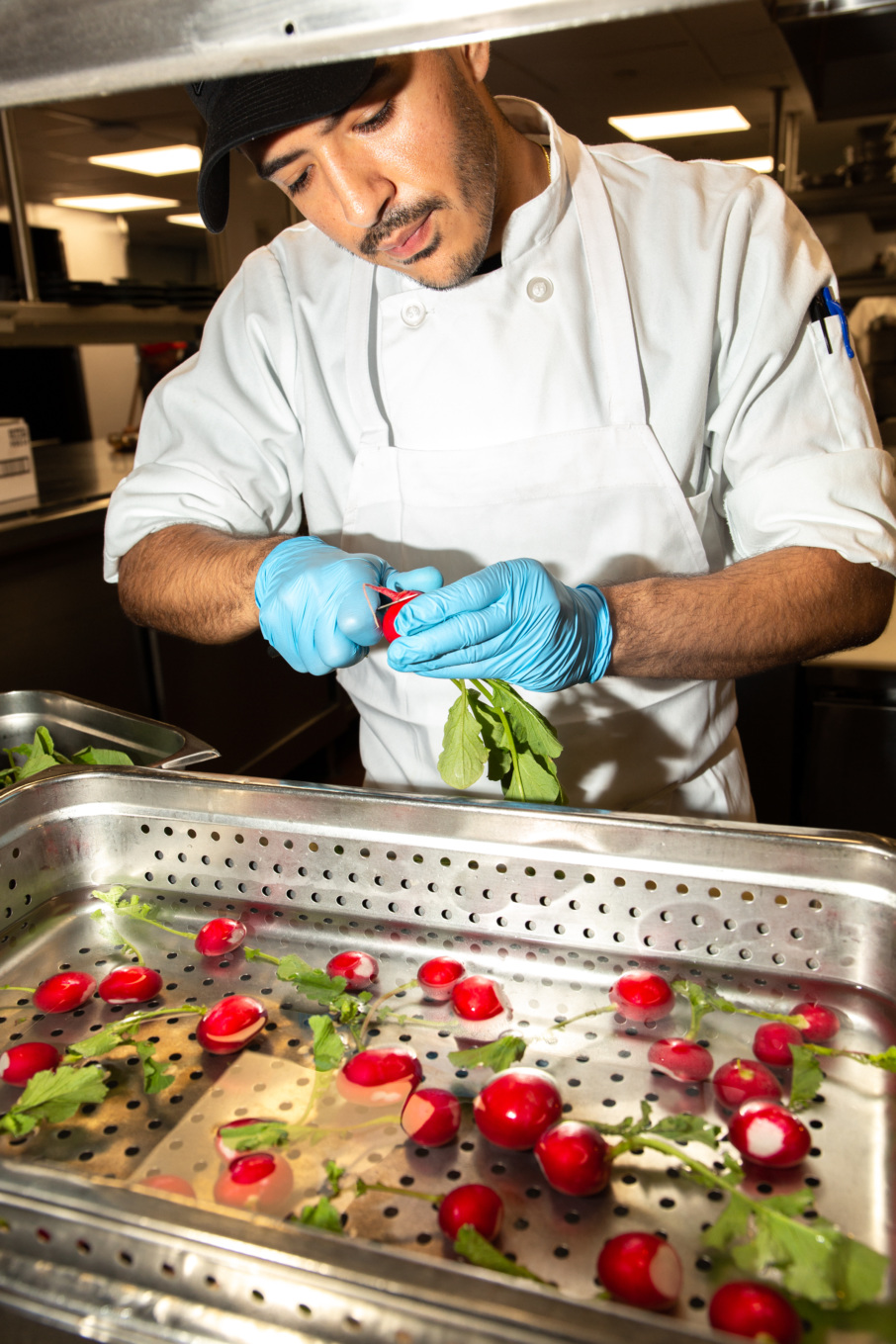

So how does this manifest itself? A roughly seven-course meal, priced at $195, will begin with an assortment of antipasti, served family-style. It will be followed by a progression of hyper-seasonal produce, pasta, and then meat- or fish-centric entrees, and dessert. Some will be individually plated, some served for sharing. If that sounds familiar, it’s similar to the format at Saga, Katz’s last big opening downtown. There will be a slightly more expensive menu that comes with additional pasta and entree courses and, down the road, a separate menu for the bar, which itself was one of Del Posto’s highlights.
Al Coro’s menu will evolve with the seasons in a way that, as Katz sees it, few other Italian restaurants do these days. Another dish on the opening menu, for example, will be green and white asparagus at their sweet peak, poached gently with bay leaf and finished with an herby gremolata balanced out with some pickled alliums, and just enough lardo to give the dish some weight. But as summer progresses, the dish may evolve into something else that favors cured fish, or a course crafted around juicy heirloom tomatoes. This is not your standard seasonal vegetable swap.
Back in the dining room, a newly constructed balcony sits vacant over the bar. Eventually, it will come to life as a stage for musical performances. Katz’s vision for the performances — complete with headlining acts and monthslong residencies — isn’t just as background music, but an integral part of the experience. “The idea is that music and food and service can coexist,” he says. In his mind, diners today want to be entertained in a more holistic way.
With a capacity of about 130 guests, Al Coro will be one of the biggest dinner orchestrations in the city. To elegantly serve a room this size, to make each guest feel welcomed and comfortable, can take years of trial and error. But Katz and Rodriguez are already investing heavily in getting their opening team up to speed. “We’re going to do service drills, we’re going to practice all those technical aspects of the job, but we have to do it with some pizzazz,” says Grant Gardner, Al Coro’s general manager and a fine dining front-of-house veteran. (Gardner has worked at Intersect by Lexus and for USHG and is also, fortuitously, a professionally trained musician). “Hiring for personality is part of it,” he adds.


Other, fundamental choices are equally worthwhile: increasing wages, providing opportunities for skill-building and growth, and managing schedules to avoid burnout — notions that, pre-pandemic, largely didn’t exist. This was important to Katz and Rodriguez, who each emphasized the importance of starting slow. The restaurant will open for four nights a week, ramping up as the team finds its footing. Discolo, the labyrinth-like lounge downstairs, will open later this year.
In the days leading up to the first service, there will be more drills, more dress rehearsals, and hours upon hours of kitchen prep. The team has ballooned to roughly 50 people, and is expected to grow even more. “It’s a tall order to fill and that’s okay,” says Rodriguez. “I like being challenged.”
On a recent night at Mel’s, the next-door pizza and wine bar Katz and Rodriguez opened earlier this year, Rodriguez was hanging back in the open kitchen as her team deftly pushed out impeccably charred pizzas and heaping plates of smoky lettuces. It was apparent: She is ready to begin her work next door at Al Coro. Ready, as it were, for the second act to begin.
Mahira Rivers is a restaurant critic and writer based in New York, and Resy’s New York columnist. In addition to spending five years as an anonymous inspector for The Michelin Guides, her writing has been published in The New York Times, New York Magazine, Food & Wine, GQ and elsewhere, and recognized by the James Beard Foundation. Follow her on Twitter and Instagram. Follow Resy, too.

